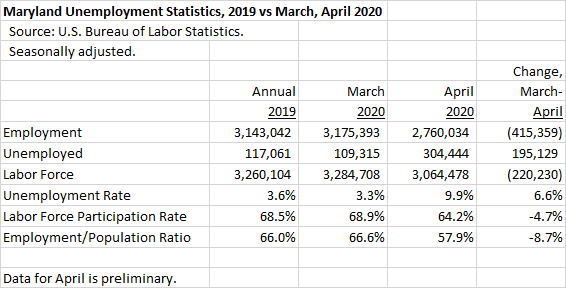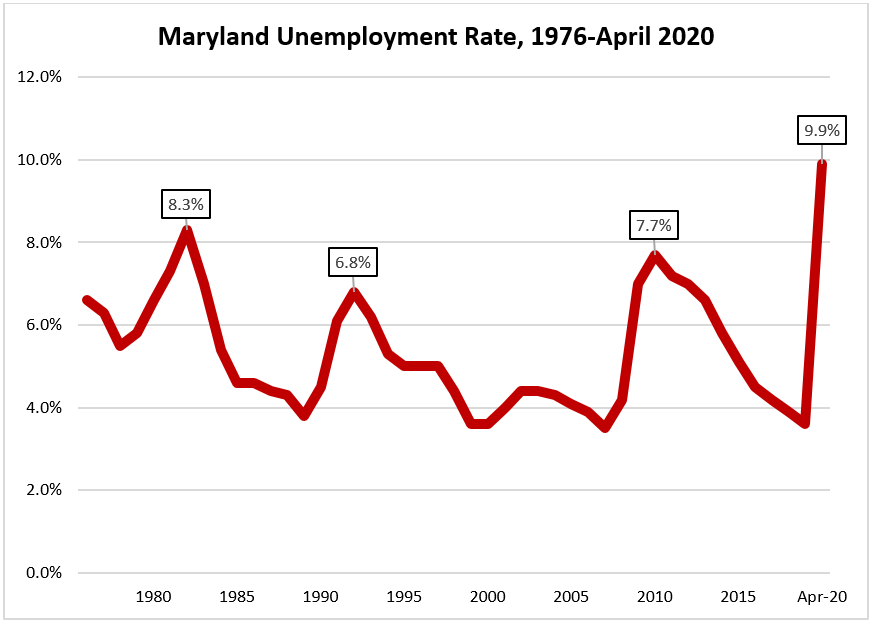By Adam Pagnucco.
Today, the U.S. Bureau of Labor Statistics (BLS) released its preliminary state-level unemployment numbers for April. In March, BLS estimated Maryland’s unemployment rate at 3.3%. In April, BLS estimated Maryland’s unemployment rate at 9.9%.
That’s a tripling of Maryland’s unemployment rate in one month.
Here are BLS’s estimates for the components of the unemployment rate in March and April, as well as in 2019.

Perhaps the most interesting estimate from BLS is that of the 415,359 people who lost their jobs in April, more than half (220,230) left the labor force entirely. That means they are without jobs and, according to BLS, not currently seeking work. In contrast, BLS defines unemployed people as having “no employment during the reference week, were available for work, except for temporary illness, and had made specific efforts to find employment sometime during the 4-week period ending with the reference week.”
As high as the April unemployment rate may be, it’s bound to be lower than the state’s unemployment rate today. That’s because BLS’s reference week for a monthly estimate is the week containing the 12th day of the month. State data indicates that 296,842 unemployment insurance claims were filed in the four weeks ending on April 11 while 310,946 more were filed in the five weeks thereafter. That means that May’s unemployment rate will be significantly higher than April’s.
Maryland’s labor force is not the only casualty of the COVID-19 crisis. BLS reports that D.C.’s unemployment rate rose from 6.0% in March to 11.1% in April. In Virginia, unemployment rose from 3.3% in March to 10.6% in April. Nationally, unemployment rose from 4.4% in March to 14.7% in April. The bright side for Maryland, D.C. and Virginia is that they all have unemployment rates significantly below most other states.
To put April’s unemployment rate in perspective, I pulled Maryland’s annual unemployment rate numbers from 1976 to 2019 and charted them below. Unemployment varies with the business cycle and peaked in 8.3% in 1982, 6.8% in 1992 and 7.7% in 2010. In each of those instances, the unemployment rate took three years to reach its peak. This time, the acceleration of unemployment took one month. What will next month look like?

BLS has not yet released county-level data for April. When it’s available, I will post it.
